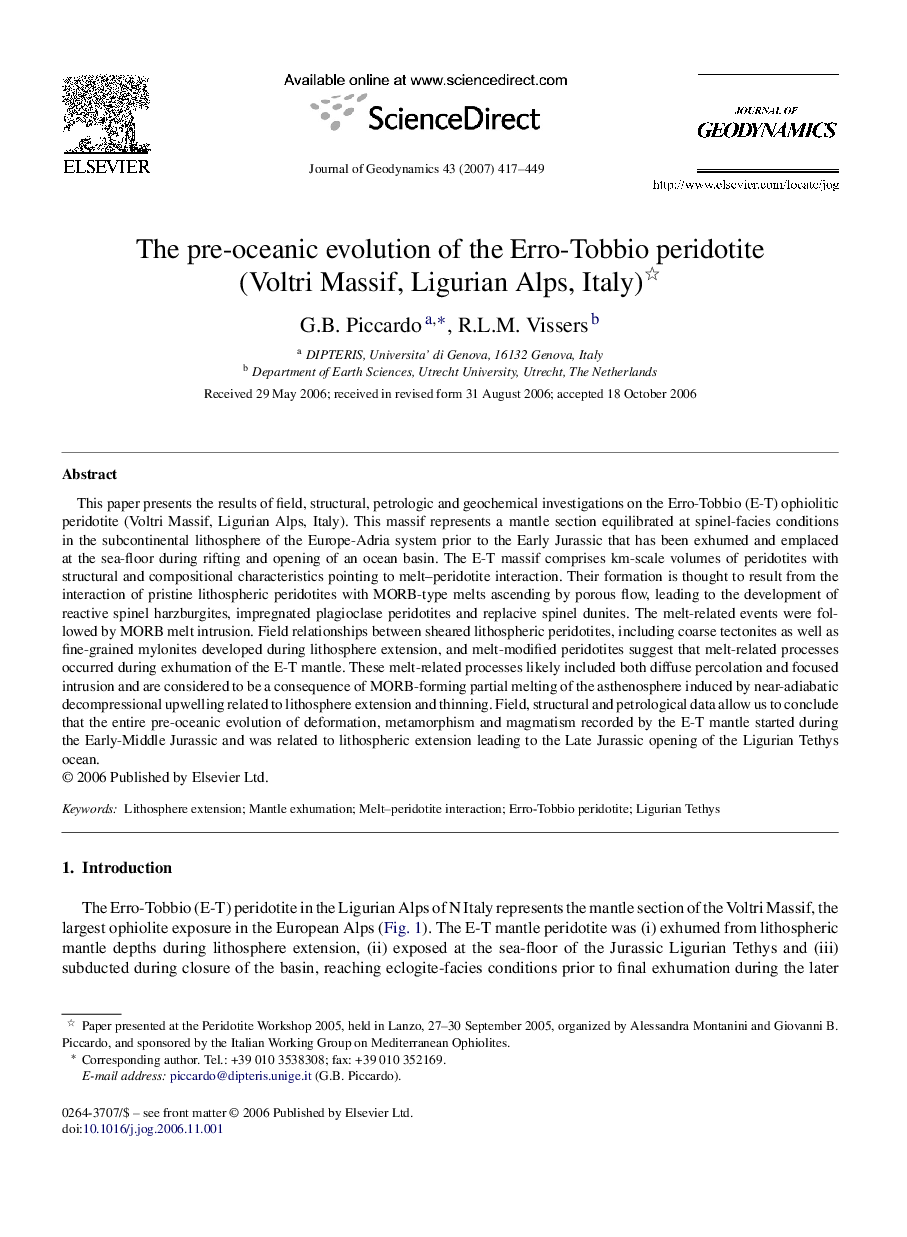| Article ID | Journal | Published Year | Pages | File Type |
|---|---|---|---|---|
| 4688797 | Journal of Geodynamics | 2007 | 33 Pages |
Abstract
This paper presents the results of field, structural, petrologic and geochemical investigations on the Erro-Tobbio (E-T) ophiolitic peridotite (Voltri Massif, Ligurian Alps, Italy). This massif represents a mantle section equilibrated at spinel-facies conditions in the subcontinental lithosphere of the Europe-Adria system prior to the Early Jurassic that has been exhumed and emplaced at the sea-floor during rifting and opening of an ocean basin. The E-T massif comprises km-scale volumes of peridotites with structural and compositional characteristics pointing to melt-peridotite interaction. Their formation is thought to result from the interaction of pristine lithospheric peridotites with MORB-type melts ascending by porous flow, leading to the development of reactive spinel harzburgites, impregnated plagioclase peridotites and replacive spinel dunites. The melt-related events were followed by MORB melt intrusion. Field relationships between sheared lithospheric peridotites, including coarse tectonites as well as fine-grained mylonites developed during lithosphere extension, and melt-modified peridotites suggest that melt-related processes occurred during exhumation of the E-T mantle. These melt-related processes likely included both diffuse percolation and focused intrusion and are considered to be a consequence of MORB-forming partial melting of the asthenosphere induced by near-adiabatic decompressional upwelling related to lithosphere extension and thinning. Field, structural and petrological data allow us to conclude that the entire pre-oceanic evolution of deformation, metamorphism and magmatism recorded by the E-T mantle started during the Early-Middle Jurassic and was related to lithospheric extension leading to the Late Jurassic opening of the Ligurian Tethys ocean.
Related Topics
Physical Sciences and Engineering
Earth and Planetary Sciences
Earth-Surface Processes
Authors
G.B. Piccardo, R.L.M. Vissers,
